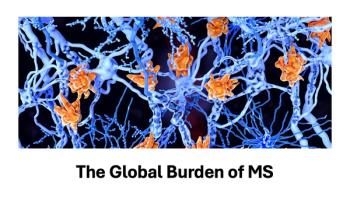
Four new oncology payment models
F. Randy Vogenberg, PhD, partner, Access Market Intelligence, and cofounder National Institute of Collaborative Healthcare, Greenville, S.C., shares insight from AMCP.
At the Academy of Managed Care Pharmacy’s Annual Meeting, the published attendance was high as usual, the venue large, and the weather cooperated nicely. Topics offered a wide range of content but only a few areas really threaded throughout the program, such as care transformation, transitions in the daily business of care management, and new specialty or biologic drugs that are more obviously impacting the healthcare system.
One great example of a thread lies in the fact that oncology care marketing continues to heat up in the U.S. marketplace. However, continuing benefit coverage planning for 2017 are also topics that are receiving increasing attention-to include cancer care.
VogenbergJust as the new oncology product pipeline is providing new options or treatments for a wide variety of cancers, market stakeholders are continuing to adjust their daily practices around providing care, decision-making on therapies or product coverage in 2016 because of the continuing impacts of the Affordable Care Act (ACA) on commercial markets too.
Geographic as well as plan specific “tweaks” continue to pop-up while nearly all plans are actively engaged in 2017 market planning for health benefit coverages that will likely result in more or different access changes for various stakeholders.
Four oncology alternative payment models
Stakeholders are increasingly reviewing four key oncology alternative payment models:
- Clinical pathways are based on National Comprehensive Cancer Network (NCCN) guidelines, and considered by many as the first step toward more comprehensive payment and delivery reform in oncology.
Texas Oncology is actively promoting its approach for optimal outcomes and cancer medical home. Paradoxically, this does work and can provide value to employers, but not necessarily for third-party payers.
- The patient-centered oncology medical home includes a fixed per-member per-month fee for clinicians who meet a specific set of capabilities and quality standards in their practices.
- The oncology accountable care organizations (ACOs) framework introduces a shared-saving model based on overall patient costs and quality of care in addition to fee-for-service reimbursement.
- Bundled payments are a combined payment for a package of clinically related services in a case or episode of care, including multiple services from a particular provider or the services of multiple providers. UnitedHealthcare, while decreasing ACA plans, is discussing their bundled payments model driven by Lee Newcomer, MD, MHA, with health plan-focused cost savings using comparative analyses and reference based information to drive cost down.
Other efforts include:
• Reference-based pricing, which builds off of CMS/Medicare efforts to create market norms for care costs by Medical Savings Account plans.
• Pharmacy benefit managers are promoting value-based formulary strategy which look to continue driving therapeutic substitution or generic opportunities whenever possible while addressing transparency on contracting and rebates.
Commercial self-funded plan sponsors are becoming more engaged and looking more closely at cancer care and immunology. Contracting for health services using alternative payment models is increasing, but overall remains low for drug contracting alone among employers of all sizes.
Overall as a commentary, this emerging effort in the commercial market is moving trend down more than up. For specialty and biologic drugs much the same-the manufacturer still controls drug cost and third parties working off of those numbers play the game of savings. Without a true structural change in healthcare financing, i.e., insurance innovation such as is seen with
F. Randy Vogenberg, PhD, is partner, Access Market Intelligence, and cofounder, the National Institute of Collaborative Healthcare, Greenville, S.C. Access Market Intelligence follows weekly managed market changes in pharmacy and medical benefits, while looking into the near future that is quickly shaping up to be quite disruptive in 2017 to 2018 compared to prior years.
Newsletter
Get the latest industry news, event updates, and more from Managed healthcare Executive.






















































